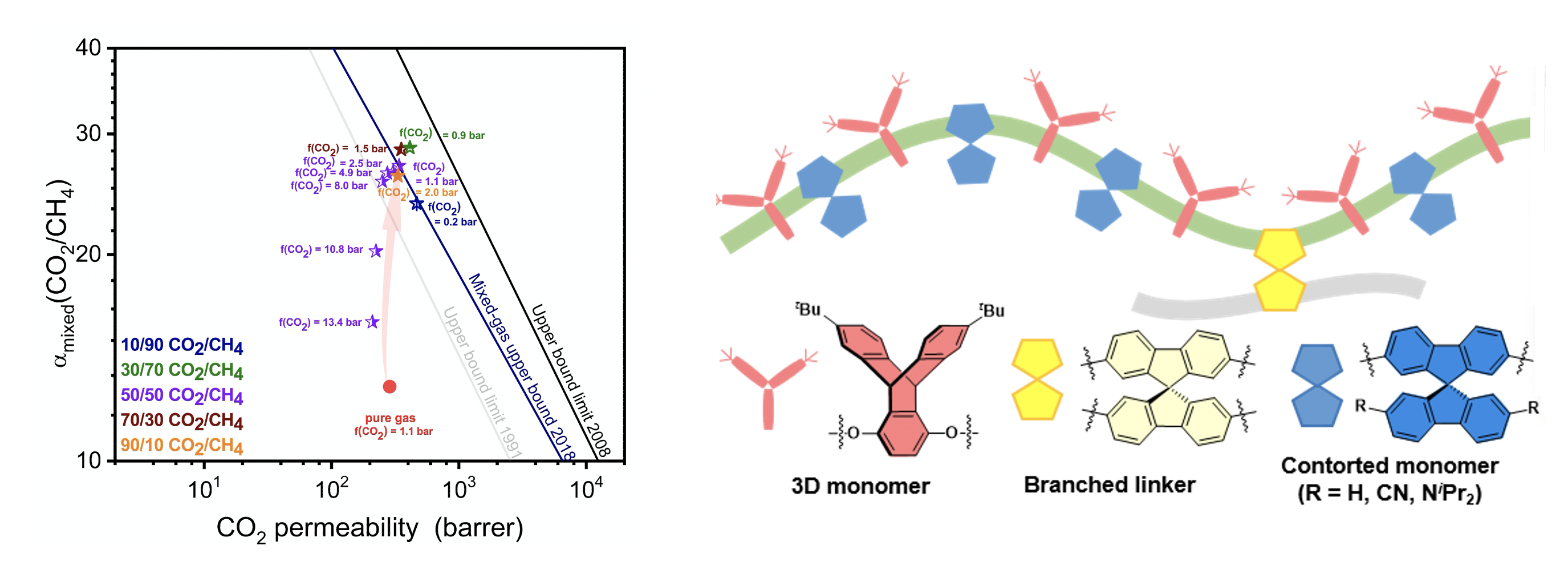(280d) Leveraging the Competitive Sorption Effects and Versatile Synthetic Strategy of Novel Microporous Poly(arylene ether) Membranes for Efficient CO2 separations
AIChE Annual Meeting
2023
2023 AIChE Annual Meeting
Transport and Energy Processes
CO2 Capture, Utilization, and Disposal: Key to Clean Energy Production
Tuesday, November 7, 2023 - 9:00am to 9:20am
Membrane-based gas separations are crucial for obtaining low-energy raw materials and reducing carbon emissions in the chemical industry as they offer an attractive non-thermal means to separate molecules. However, existing membrane technologies often suffer from intrinsic limitations of the membrane materials themselves. Microporous organic polymers (MOPs) are highly desirable for gas separation due to their combination of molecular sieving ability and solution-processability. In this work, we focus on a new class of MOPs within the family of poly(arylene ethers) (PAEs) for efficient CO2 separations. The microporous structure of these PAEs, which are synthesized using a versatile strategy, is enhanced with CO2-philic groups like nitrile and tertiary amine groups to improve the membrane interaction with CO2 molecules, thereby enhancing CO2 separation performance. The robust synthetic procedure and CO2 competitive sorption effects of these polymers increase CO2/CH4 selectivity by nearly 250% for mixed-gas tests relative to pure-gas tests. The work is extended to investigating the effects of highly plasticizing impurities like H2S on competitive sorption under relevant conditions. Ternary CO2/CH4/H2S permeation studies reveal that H2S enhances acid gas separation capability, permitting the simultaneous exclusion of H2S and CO2 in the mixture. This can reduce or even eliminate the need for pre-treatment steps in purification, thereby lowering the cost and complexity of the eventual separation processes. Besides, the branch-like architectures of these polymers provide stability for CO2 separations that has never been observed for other membranes that were fabricated using purely linear MOP materials. This new family of PAEs provides significant and generalizable trends that can be leveraged to improve CO2 separations for this unique class of materials. The methodology, implications, and future directions of applying this new class of PAEs to CO2 separations will be outlined in this presentation, along with an in-depth literature survey on MOP permeation data for similar conditions.


